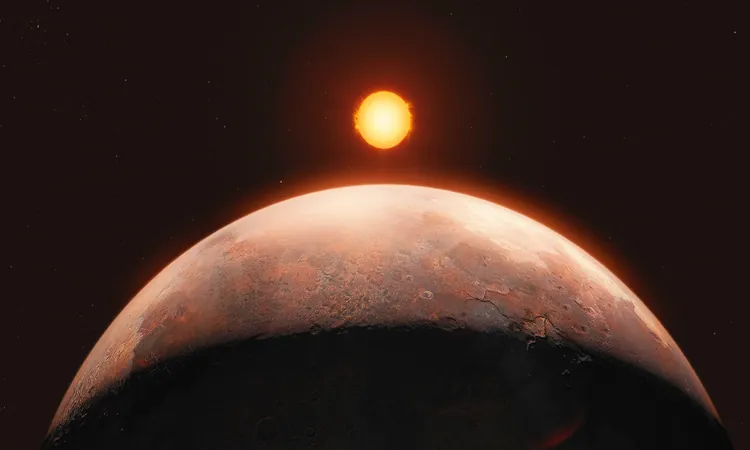
Astronomers Make Groundbreaking Discovery: Exoplanet Found Orbiting Barnard’s Star, Our Cosmic Neighbor!
2024-10-05
Barnard’s Star: A Cosmic Confidence Builder
Located a mere six light-years away in the constellation Ophiuchus, Barnard’s Star is a red dwarf, classified as an M-type star. Unlike our bright Sun, Barnard’s Star shines faintly, making it invisible to the naked eye. Its relatively swift movement across the sky has long intrigued astronomers, turning it into a subject of study with great potential for unraveling the mysteries of stellar dynamics and formation. For years, researchers have attempted to discover exoplanets around this star, but previous efforts had not yielded conclusive results—until now.
Introducing Barnard b: The Newly Discovered Exoplanet
The newly identified exoplanet, dubbed Barnard b, possesses about half the mass of Venus and completes its orbit in just over three Earth days. Situated approximately twenty times closer to its star than Mercury is to our Sun, Barnard b experiences extreme temperatures that soar to around 257 degrees Fahrenheit (125 degrees Celsius). Unfortunately, this scorching heat means that any conditions for liquid water—essential for life as we know it—are absent. Jonay González Hernández, a key researcher from the Instituto de Astrofísica de Canarias, explained, “Barnard b represents one of the lowest-mass exoplanets identified to date, yet its proximity to its host star places it well outside the habitable zone.” This planetary discovery fuels curiosity but also underscores the inhospitable conditions of Barnard b.
The Hunt for More Worlds
This discovery comes with exciting implications—three additional potential exoplanets might also be orbiting Barnard’s Star. Researchers are now aiming to confirm the validity of these candidate signals. Alejandro Suárez Mascareño, a fellow researcher at the Instituto de Astrofísica de Canarias, stated, “The discovery of Barnard b enhances our understanding, showing that our cosmic backyard is abundant in low-mass planets.”
Advances in Astronomy: The Future Is Bright
The search for exoplanets doesn't stop here. Upcoming instruments, especially the Extremely Large Telescope (ELT) currently under construction, are expected to revolutionize the field. The ELT’s advanced capabilities promise to uncover signs of even more distant and elusive small, rocky planets, continuing to expand our knowledge of the universe. The improvements in astronomical tools have dramatically enriched our comprehension of the cosmos, allowing scientists to tune into the faint signals of distant worlds. The refinement of these technologies enables a deeper dialogue with the universe, as astronomers seek out new planetary orbits and explore the potential for life beyond our own globe.
Looking Forward: the Impact of New Discoveries
As researchers delve deeper into the cosmos with continued studies around Barnard’s Star, the implications of Barnard b’s discovery lay pathways for future investigations into planetary formation, atmospheric composition, and habitability prospects. Each revelation enriches our comprehension of Earth’s place amid the vast cosmos and might steer humanity closer to answering the age-old question of whether we are alone in the universe. Stay tuned for more updates as we continue to explore our galactic neighborhood and reveal the wonders that await us beyond the stars!


 Brasil (PT)
Brasil (PT)
 Canada (EN)
Canada (EN)
 Chile (ES)
Chile (ES)
 España (ES)
España (ES)
 France (FR)
France (FR)
 Hong Kong (EN)
Hong Kong (EN)
 Italia (IT)
Italia (IT)
 日本 (JA)
日本 (JA)
 Magyarország (HU)
Magyarország (HU)
 Norge (NO)
Norge (NO)
 Polska (PL)
Polska (PL)
 Schweiz (DE)
Schweiz (DE)
 Singapore (EN)
Singapore (EN)
 Sverige (SV)
Sverige (SV)
 Suomi (FI)
Suomi (FI)
 Türkiye (TR)
Türkiye (TR)